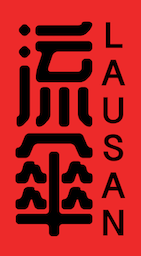International solidarity is absolutely critical. Pressure on foodpanda’s Hong Kong management and its Berlin-based parent company Delivery Hero through social media, email, and phone calls could strengthen the striking worker leverage at the bargaining table on Thursday and beyond.
We’re calling on supporters to tag foodpanda and Delivery Hero on all social media platforms to accept all the workers’ demands in their upcoming negotiation meeting on Friday (November 19 HKT).
Here’s a sample message you can deliver over the phone or on social media to foodpanda and Delivery Hero:
“Hello, I am reaching out in support of the striking foodpanda workers in Hong Kong. I am asking the company to reverse the wage cuts and accept the workers’ other demands.”
foodpanda (HK):
FB: @foodpandahongkong
IG: @foodpanda_hongkong
Twitter: @foodpandahk
Email: [email protected]
Delivery Hero (Berlin):
FB: @deliveryhero
IG: @deliveryhero
Twitter: @deliveryherocom
Phone: +49 30 544459111
Email: [email protected]
Why are foodpanda riders going on strike?
Hundreds of Hong Kong delivery riders working for the online food delivery platform, foodpanda, staged a strike on the weekend of November 13 and 14. A few hundred protested outside of the company’s Hong Kong headquarters on November 13, and their representatives entered negotiations with the company on November 16. The immediate catalyst is that riders have seen their incomes slashed as a result of the company’s continuous cuts to the minimum base fee per delivery, despite working 10-12 hours a day and 6-7 days a week to make a decent living. For instance, the delivery minimum fee for each motorbike order has been cut from HK$50 to $45,1 while the fee for delivery on foot has been cut from HK$35 to HK$28. The company previously announced further cuts of HK$40 and HK$22 respectively effective on Monday November 15. Among other demands, the striking riders want the delivery fee cuts to be reversed.
How did the strike begin?
There has been agitation among the riders for months now via online Whatsapp groups and through in-person informal network organizing. The riders do not have their own unions or associations, so they have largely organized themselves but have also benefited from the support of HKCTU organizers until its disbandment. This wave began with Pakistani migrant delivery worker Waqas Fida, who told Stand News interviewers that he began a group chat to agitate other workers and designed his own flyers after his work account was shut down in the weekend. Fida had been facing similar issues with the foodpanda management for months. Over the weekend, the strike was coordinated among riders in different parts of Hong Kong (riders usually only get orders from the district/region they work in, so coordination across districts/regions is both difficult and necessary for a successful strike), and different groups of riders assumed different responsibilities for organizing, publicizing, and negotiation.
Is this the first strike by the riders in Hong Kong?
The current strike has followed several actions in recent years. In July 2021, a small number of riders staged a protest with similar grievances, but the management completely refused their demands. This followed a more successful strike by dozens of foodpanda riders in September 2020 in which the company made limited concessions by improving transparency but refused to improve pay. Deliveroo riders, the rival food delivery platform in Hong Kong, similarly went on strike in January 2018 over pay. It is also worth mentioning that platform workers in mainland China have also been striking in recent years, and one of the key organizers known as Mengzhu has been detained since February 2021. All of them are part of a global trend in platform worker organizing.
What is the composition of the striking workers?
There are both ethnically Han Chinese and riders of South Asian migrant backgrounds in the workforce and on strike. They are predominantly male overall. During the strike over the weekend, the South Asian riders have taken the lead in the protest, while the striking riders have also participated in work stoppages and disruptions. In particular, among South Asian riders, there is a very strong community-based solidarity and organic leaders have emerged to lead and coordinate the actions. South Asian workers are especially vulnerable as they face discrimination in securing other decent jobs in Hong Kong (including discrimination from the customers who sometimes refuse to have their food delivered by South Asian riders), and often remit their income to their families back home. They have been impacted the most by the delivery fee cuts but also will lose the most if their jobs are terminated or face retaliation.
What other issues have aggravated the riders?
In addition to the fee cuts, the striking riders pointed to the company’s punitive measures to control riders such as forced breaks, forced end of shifts, the suspension of accounts when riders decline orders with legitimate reasons, the use of an aerial map instead of a road map that calculates direct distance rather than actual road distance, the lack of company response to riders submitting inquiries and complaints, the short acceptance time that riders often cannot respond in time and long order waiting time at the restaurants, and others. In total, the striking workers proposed 15 demands to improve the pay, conditions, and dignity of their job, which are currently circulating privately.
How does the current political environment impact the riders’ strike?
In the 11 months since the Hong Kong National Security Law went into effect, street protests and demonstrations have been made illegal (on top of the pandemic regulations against gathering) and persecuted on the grounds of endangering national security. Trade unions have been attacked and forced to disband under harassment and threats from the government and pro-government media. The new union movement that sprung up during the 2019 protests has also been targeted, forcing many unions to disband. It is therefore extremely rare and encouraging to see the riders out on strike and in protest. However, although in previous mobilizations the riders had gained inspiration from the Hong Kong protests and made five demands of their own, this time around they have been careful not to make their strike political, or carry any overt political message. Even so, the police arrived quickly at the scene on Tuesday as the riders surrounded the company headquarters, threatening the use of force to compel the riders to leave.
Where do things stand now, and what support do they need?
An eight-hour face-to-face negotiation between the riders’ representatives and the company on Tuesday November 16 resulted in an impasse. While the company recognized the legitimacy of several of the workers’ demands and vowed to make changes, they cited the need to consult their parent company’s German headquarters to make final decisions on the key demands (foodpanda’s regional headquarters are in Singapore, and is owned by the Berlin-based Delivery Hero). The company, however, refused to make any concession on the delivery fee cuts, the most important demand put forward by the striking riders but have agreed to another meeting on Thursday November 17.
What are the strikers’ demands?
- A minimum order fee of 50 HKD for riders and 30 HKD for walkers and cyclists
- Stop forced break / forced end of shift / suspension of accounts when couriers redispatch and decline orders with reasonable reasons
- Cancellation of the reduction of service fee for stacked orders
- Stop suspending/terminating riders’ accounts without good reasons, and the company must give a proof of specific reasons when it suspends or terminates riders’ accounts. Re-activate those accounts that were once suspended/terminated for no clear reasons
- Use road map instead of aerial map
- A fair order cancellation fee for orders cancelled for reasons out of rider’s reach
- Improve the order assignment system that takes restaurant’s preparation time into account in order to reduce couriers’ waiting time
- Educate the customers and vendor staff to treat riders politely; educate the vendors to pack the orders according to certain standard
- Set a time limit for the customer to pick up orders
- At least one physical enquiry center in Hong Kong for receiving riders’ complaints and enquiries in person
- Change the sound for pop-up warning or notifications; use a ‘beep’ instead of the current annoying and distracting sound
- Provide us with pay statement slip / income proof, with detailed explanation of the amount of COD and service fees in a certain period
- Order acceptance time should be at least 100 seconds for couriers to avoid missing orders due to bad Internet connection
- Stop suspending riders’ accounts for taking improper photos as proof of delivery, and make the standard of photo proof more reasonable
- If a final agreement is made between Foodpanda and the negotiation team after the meeting, Foodpanda should inform each of its couriers of the content of the agreement through email
Source: 飲食及酒店業職工總會(職工盟)Catering and Hotel Industries Employees General Union(HKCTU)
Footnotes




